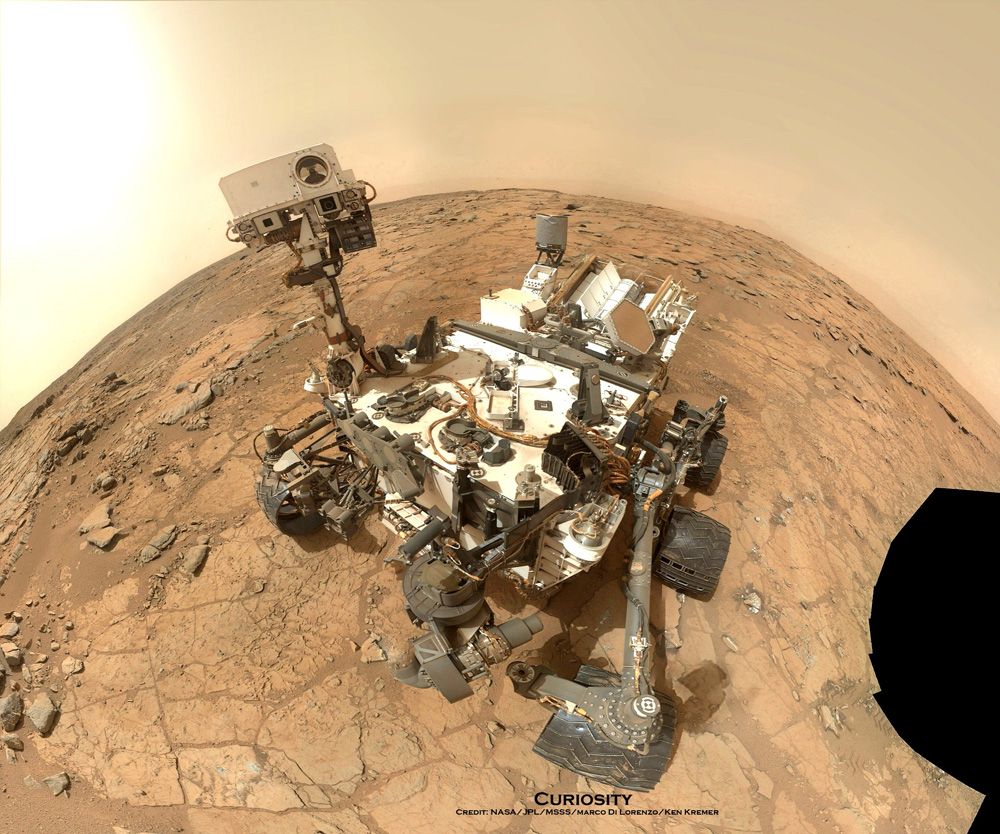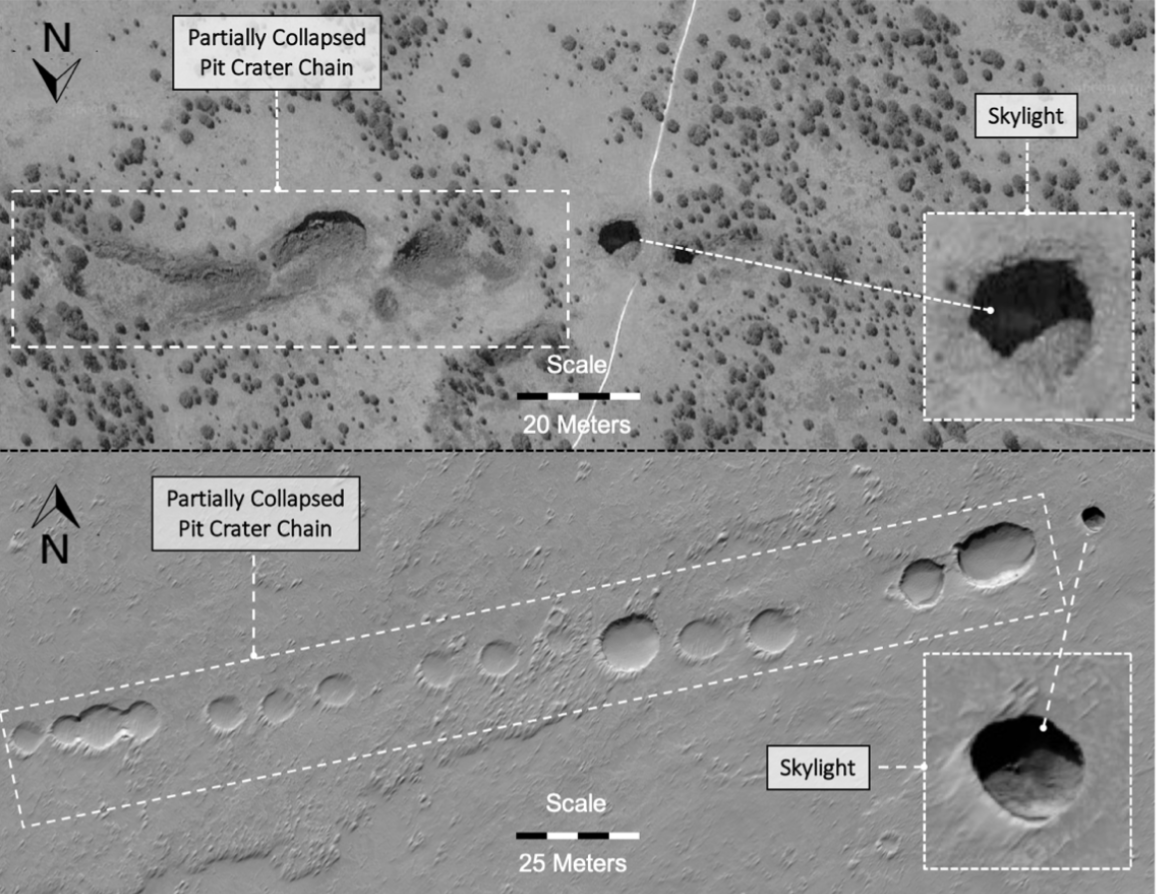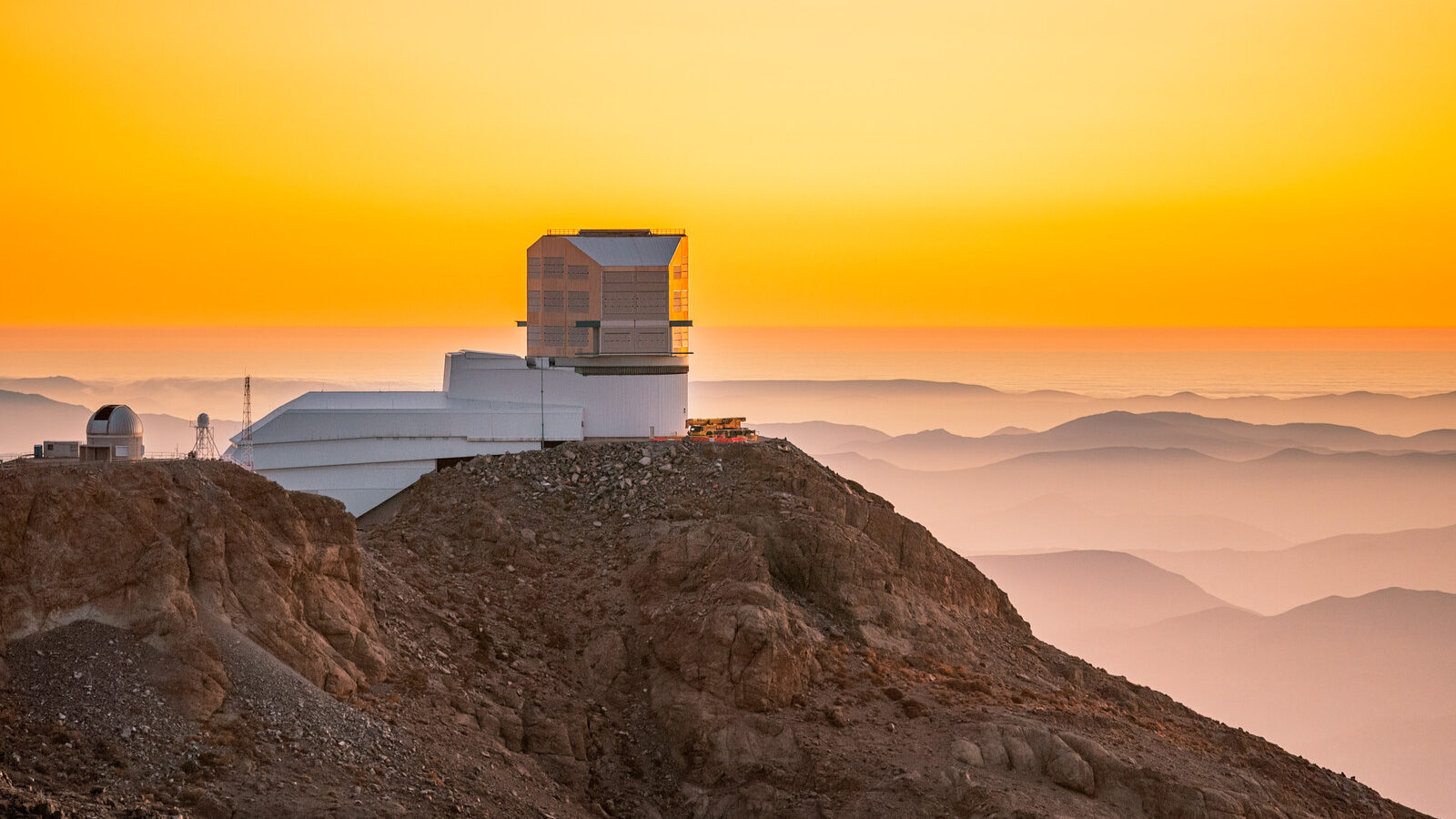These lava tubes could be the safest place for explorers to live on Mars
The Martian surface is a radiation hot zone. But these lava tubes might offer safety.

There's no safe place to camp out on Mars. But a team of researchers has identified what could be future Martian explorers' best possible hideout: a string of lava tubes in the low-lying Hellas Planitia — an impact basin blasted into the Red Planet's surface by ancient meteor impacts.
Every part of Mars could kill you. Its surface is arid, starved of oxygen and blasted daily with unrelenting, unfiltered solar radiation. Any future Martian explorers will put their lives in peril when they embark. NASA has decades of experience hauling oxygen, food and water beyond Earth. But that last killer, the radiation, is a harder problem to tackle.
On Earth, a powerful magnetic shield, known as the magnetosphere, protects us from the harsh radiation of space. Without it, a constant stream of electromagnetic rays would damage our cells and DNA, with dire consequences to our health. Ionized particles, streaming through space as slower-moving solar wind or relativistic cosmic rays add to that risk. And we know from the experiences of the only humans to exit the magnetosphere — Apollo astronauts — that even a few days' exposure to those particles can trigger headaches, flashes of light and cataracts, the researchers of the new study noted in their new paper. Plus, there's always the risk that a solar flare or cosmic ray burst could expose a Martian habitat to a sudden, deadly dose.
Related: Here's what NASA's Opportunity rover saw before 'lights out'
There's only so much shielding you can put on a spacecraft or habitat, and even astronauts on the International Space Station accept much higher cancer risk than they would experience on Earth, NASA has said. But in the new paper, that team of researchers argues that the Hellas Planitia lava tubes might be among the safest places for Martian explorers to camp out.
Hellas Planitia offers a few protective advantages on its own: NASA probes have shown that the most intense radiation environments on Mars are at the poles. But Hellas Planitia lies closer to the equator. And of all Martian environments, the impact basin is among the most low-lying at about 23,464 feet (7,152 meters) deep. That means more of Mars' thin atmosphere overhead. About 50% less radiation reaches the basin floor than higher-elevation regions of Mars, the researchers wrote. Explorers could expect about 342 microsieverts per day (a unit of radiation exposure) in the basin, compared with 547 μSv/day elsewhere on Mars. That's a much smaller dose, but still much higher than what's typically considered safe.
The precise effects of long-term exposure to sub-fatal doses of radiation like this aren't well understood, as Richard Kerr wrote for the news section of the journal Science in 2013. But 342 μSv/day is 25% higher than what the average astronauts experience on the ISS every day, where NASA typically limits exposures to just a couple months. Martian explorers might spend years on the Red Planet. And exposure to such a high dose for years on end could pose a serious danger to everyone involved, the researchers said. (The maximum safe radiation dose, according to the United States Nuclear Regulatory Commission is 620 millirem, or 6,200 μSv, per year. At 342 μSv/day, Martian explorers would experience that much radiation in just 19 days.)
Breaking space news, the latest updates on rocket launches, skywatching events and more!
In the northeast corner of Hellas Planitia lies the Hadriacus Mons. This mountain formed as a result of an erupting volcano back when lava still flowed in the long-since-cooled Martian interior.
On Earth, lava flows can burrow through the ground on their way to the surface, leaving behind empty tunnels with hardened walls, floors and ceilings once the molten rock drains away. You can spot signs of them flying overhead: A line of "pit craters" near a dormant volcano tells the story of a lava tube that formed, drained and then partially collapsed in one section or another — sometimes even leaving behind "skylight" holes in the middle of the crater, the researchers wrote.
Hunting through images taken from probes in Mars' orbit, the researchers identified several such pit crater chains and other evidence of old lava flows that burrowed into the Martian crust around Hadriacus Mons. Multiple sites around that low-lying mountain seem like tempting candidates for future exploration, they wrote. And on Mars, with its lower gravity, simulations suggest that the hollowed-out tubes would be much larger than those found on Earth.

Assuming these clues point to the existence of real lava tubes in Hellas Planitia, the researchers visited similar sites in the American Southwest to test the idea of lava tubes as radiation shields. Though cosmic radiation on Earth's surface is much lower than on Mars, some of those particles do make it to our planet's surface. Comparing measurements of radiation inside and outside California's Mojave Aiken tube, Arizona's Lava River Cave, and New Mexico's Big Skylight, Giant Ice Cave and Junction Cave, the researchers found a significant radiation-shielding effect. Extrapolating their results to Mars, they calculated that living in a Hellas lava tube, people might experience just about 61.64 μSv/day. That's still high, but closer to what you could expect if you got your teeth X-rayed several times a day than what you could expect living in a habitat on the surface of Mars.
There are other potential advantages to life in the tubes, the researchers wrote. Shore them up, seal them off, and it might be possible to pressurize them and warm them up to create livable environments much larger than what a rocket could haul from Earth. Like human-made shelters, the tubes would also offer protection from micrometeorites, temperature fluctuations and potentially dangerous substances in the Martian surface dust.
And these explorers could learn more about the Red Planet. "The candidate lava tubes, moreover, can serve as important locations for direct observation and study of Martian geology and geomorphology," the researchers concluded, "as well as potentially uncovering any evidence for the development of microbial life early in the natural history of Mars."
The paper has been accepted for publication in The Journal of The Washington Academy of Sciences and can be read on arXiv.
- The 12 strangest objects in the universe
- The Curiosity rover just took a very emo photo of its rocky Martian prison
- The 15 weirdest galaxies in our universe
Originally published on Live Science.
OFFER: Save 45% on 'How It Works' 'All About Space' and 'All About History'!
For a limited time, you can take out a digital subscription to any of our best-selling science magazines for just $2.38 per month, or 45% off the standard price for the first three months.
Join our Space Forums to keep talking space on the latest missions, night sky and more! And if you have a news tip, correction or comment, let us know at: community@space.com.

Rafi wrote for Live Science from 2017 until 2021, when he became a technical writer for IBM Quantum. He has a bachelor's degree in journalism from Northwestern University’s Medill School of journalism. You can find his past science reporting at Inverse, Business Insider and Popular Science, and his past photojournalism on the Flash90 wire service and in the pages of The Courier Post of southern New Jersey.
-
Saracen1955 Wow, a blast from the past! This idea was first put forward back in 2010, when photos revealed the existence of "skylights" or entrances to a series of caves and tunnels in the side of the Pavonis Mons volcano. Scientists at that time suggested that they could be used as a safe haven for astronauts to survive in, while on Mars. Two years later, the idea was borught forward again. Then in 2014, several members of The Planetary Society put forward the same suggestion in an April 13th paper. It was then presented again in September, 2017 by two Italian scientists in a new study presented in Riga, Latvia. And now here it is again. What was old is new again. Nothing new to see here folks, go about your business.Reply


